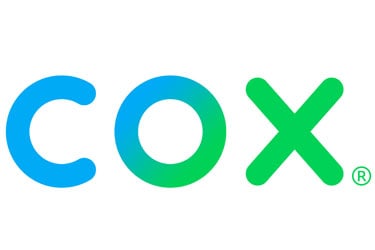
The pandemic has been a technology accelerator for businesses, municipalities, schools, healthcare and homes. As such, those of us at Cox Communications, who provide internet, telephone, security and video services to thousands of Arizona small and regional businesses and more than three million connectivity products within homes across the state, have seen a few interesting technology trends that we believe will continue throughout 2021.
Provider Adoption and Investment in Telehealth Grows
Finding ways to connect virtually with your doctor is getting easier, too. According to a Cox Business survey, only 28% of respondents said that their healthcare service provider offered telehealth before COVID-19. Providers, too, gave telehealth a thumbs up, with 57% viewing it more favorably than before the pandemic and 64% feeling more comfortable using the technology.
Further, the same report shows up to $250 billion of current U.S. healthcare spend could go virtual – up from $3 billion pre-COVID-19.
Smart Communities Keep Getting Smarter
From waste management and water meters to street lighting, parking and public safety, communities are getting smarter by the day.
In Arizona, the Cox Connected Environments Collaboratory at ASU serves as an incubation center that is engaging ASU students and faculty to design the next wave of Internet of Things (IoT) solutions that will focus on projects pertaining to smart and connected products that will empower citizens, students and local government teams to live and work more efficiently and enhance the quality of life. The ASU team is looking at urban redesign, augmented reality and the workforce of the future as well as fleet management, health and wellness and public safety.
Smart communities are increasingly becoming a priority nationwide – and worldwide. The pandemic has accelerated smart city tech, and citizens are more open to smart community tech than ever – which is unlocking doors to rapid growth that will continue. Going smart enables municipalities to make more effective data-driven decisions, decreases inefficiencies and streamlines and automates processes. It also enhances citizen and government engagement, improves infrastructure and provides new economic development opportunities.
And the trend toward just-about-everything-smart is taking place inside the home as well. According to Statista, North America in 2023 is expected to have 40% of the worldwide market of consumer spending on smart home systems like smart assistants, smart speakers and smart door locks and light switches.
School and Work Will Continue to Stay Home…Somewhat
Remote work and school are not going away anytime soon, making broadband connectivity essential. Many employees who were forced to work from home this past year may continue to do so permanently. According to Forbes, the percentage of workers permanently working from home is expected to double this year and Big Tech is leading the way with companies like Twitter and Facebook having recognized the benefits of employees working from home indefinitely, even as offices reopen.
Although working from home might have had a rocky start, employees have mastered using real-time chat and video conferencing to stay connected. According to SHRM, 94 percent of 800 employers surveyed by Mercer, an HR and workplace benefits firm, said that productivity was the same or higher than it was before the pandemic. Our own workforce at Cox will likely see a work/work from home hybrid model in the future. Interactive video conferencing and chat have enabled teams to maintain cohesion and stay connected while working out of the office. In fact, Cox Business has produced a Work-at Home solution for Arizona enterprises. This solution provides remote staff with enterprise-grade, separate internet connections from the office directly to their homes including Wi-Fi, endpoint security and a malicious domain blocker to help ensure staff members have the same highly reliable, quick connectivity they would have when working in the office.
On the education front, Rand Corporation researchers found approximately 20% of public school district superintendents and charter school leaders said they plan to continue online schooling as an option once the pandemic subsides – or are considering the online option for families and students who want the choice.
Whether teaching or learning from home or in the classroom, data-driven insights improve the classroom experience. Apps empower teachers to digitally administer homework, quizzes, tests and have one-on-one face time with students and parents.
And through artificial intelligence and machine learning, automated technology allows teachers to monitor and evaluate the progress students are making and better understand their strengths and weaknesses. For students, apps enable learning through gamification, which creates a fun and positive learning environment and can make the most reticent student excited about his or her studies.
More Content Means More Bandwidth and Navigation Help
Due to stay-in-place restrictions, the entire world has been streaming more than ever. Internet service providers, such as Cox, have experienced the equivalent of two years of traffic growth in the first few months of the pandemic and it has remained constant at those new levels.
And high-intensity applications aka “bandwidth hogs” like video streaming platforms that make online work and school possible are essential yet difficult to attain without the appropriate bandwidth. Therefore, ISPs have answered this increasingly streaming boom by offering affordable internet packages that take care of all streaming needs – voice, video or otherwise.
Speaking of voice, whether folks are binge-watching Jeopardy! on Netflix or jamming to music from Spotify using their Alexa, the use of streaming services and voice assistants is on the rise. With so many great TV shows to watch, it’s challenging to remember what’s on Peacock, Hulu, Netflix, Amazon and so on. But voice remotes allow users to pull up a series, app or movie with just a few words, such as “Find the Discovery channel” or “What should I watch?”
There’s no doubt that the pandemic will subside at some point, but the technology trends that have come to the forefront will continue in 2021 – and long after as well. Because Cox is committed to making digital life easier, we’ll continue investing in ways to better connect people and bring these critical technologies to life.
Susan Anable is Vice President of Government and Public Affairs for Cox. She oversees media, community relations, government affairs and internal communications in Arizona and Nevada. She is the Immediate Past Chairman of the Arizona Chamber of Commerce and Industry Board.
Cox Communications is committed to creating meaningful moments of human connection through broadband applications and services. The largest private telecom company in America, we proudly serve six million homes and businesses across 18 states. In metro Phoenix, we serve approximately 2.5 million product subscribers, and in Southern Arizona, approximately 400,000 product subscribers, with residential and business digital television, 1G high speed Internet, security systems and digital telephone service over its own nationwide IP network. We’re dedicated to empowering others to build a better future and celebrate diverse products, people, suppliers, communities and the characteristics that makes each one unique. The 3,100 Arizona employees of Cox are proud to have topped numerous J.D. Power and Associates’ studies of customer satisfaction and for many years top “Ranking Arizona-Best of Arizona Business” list. Cox Communications is the largest division of Cox Enterprises, a family-owned business founded in 1898 by Governor James M. Cox.


